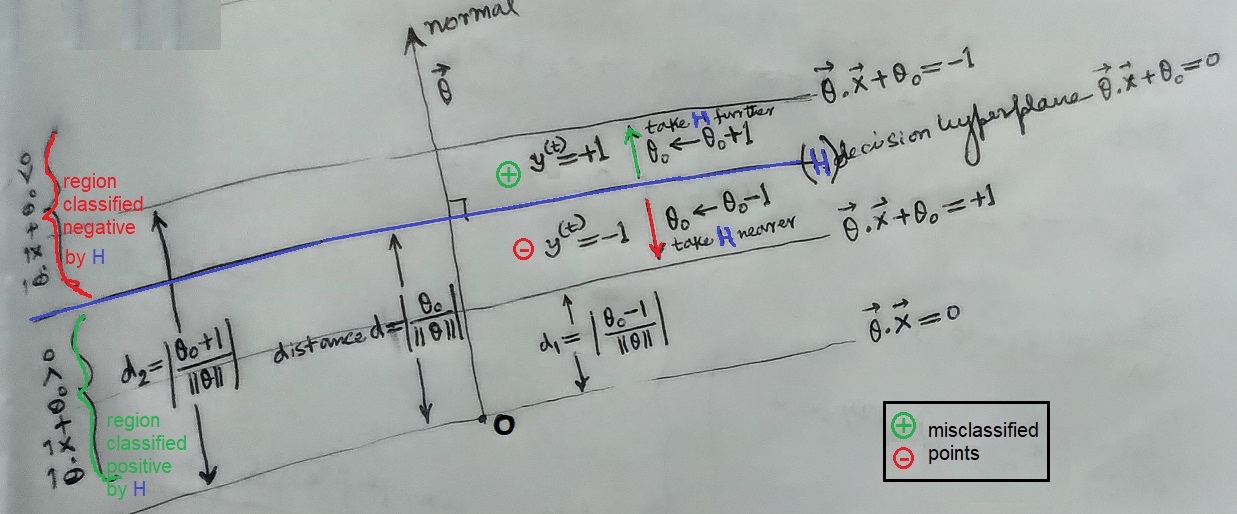I was looking for an intuition for the perceptron algorithm with offset rule, why the update rule is as follows:
cycle through all points until convergence:
$\textbf{if }\, y^{(t)} \neq \theta^{T}x^{(t)} + \theta_0 \, \textbf{ then}\\\ \quad \theta^{(k+1)} \leftarrow \theta^{k} + y^{(t)}x^{(t)}\\ \quad \theta^{(k+1)}_0 \leftarrow \theta^{k}_0 + y^{(t)}\\ $
When the offset is zero, I think the update rule is completely intuitive. However, without it, it seems a little odd just adding 1 or -1 to the offset. The only reason I could come up with to explain it was the following but I don't really think its very intuitive explanation and was looking for a different explanation.
My non-intuitive answer:
When the perceptron makes a mistake then:
$y^{(t)}(\theta^{T}x + \theta_0) \leq 0$
But we can re-write the top part as:
$<\theta, \theta_0> \cdot <x^{(t)}, 1> = \theta^{T}x + \theta_0$
and now if we just appeal to the original perceptron rule and change the feature vector to have the one attached at the end and the normal now includes $\theta_0$, now the update would occur as following:
$ \theta'^{(k+1)} = \theta'^{(k)} + y^{(t)}x'^{(t)}$
which is:
$<\theta, \theta_0> + y^{(t)}<x^{(t)}, 1> = <\theta + y^{(t)}x^{(t)}, \theta_0+y^{(t)}>$
I think this might be correct, but even if it is, I didn't really think it was intuitive or "obvious" and was wondering if anyone had a different argument?
Thanks!
PS: Feel free to edit my algorithm to have indentation and spaces, I couldn't make it have indentation without losing the latex :(

